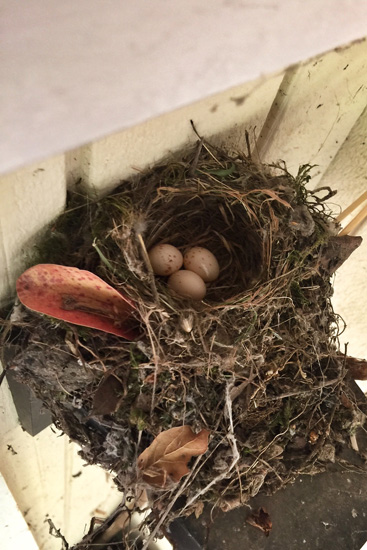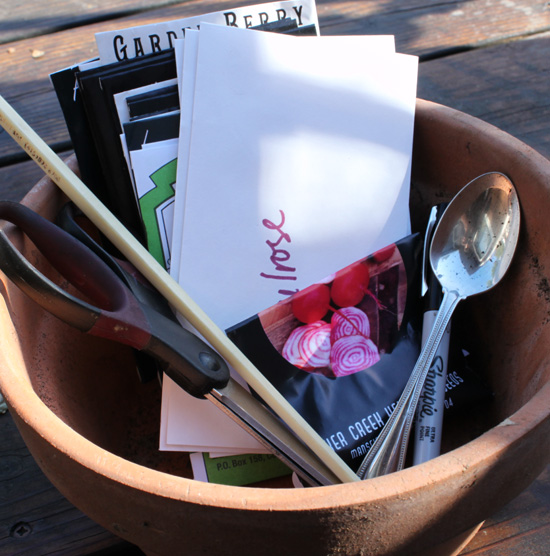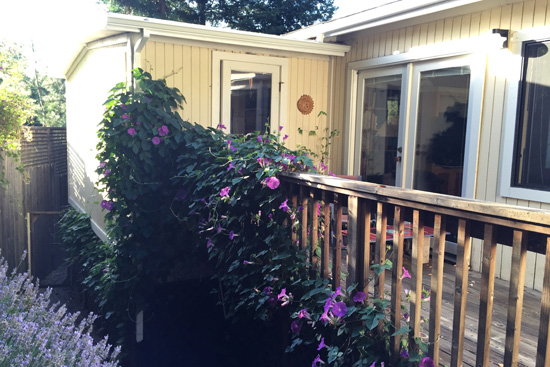
I wasn’t sure whether to title this post “Patience,” “Desire,” or “Accidents” — each of which defines some primary aspect of my relationship with the garden, and with life.
Almost a decade ago, Stewart and I would gaze with some envy at our neighbors’ beautiful morning glories as they exuberated along the fence between our houses. Stewart wanted to know if we could have some of those, too.
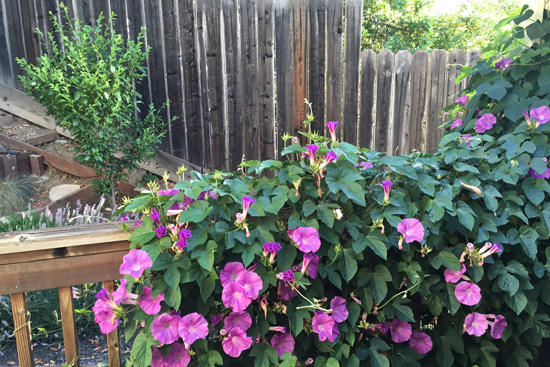
Note the little green gage plum tree coming along in the background. There were ten plums on it this year. Something ate those, too! (And it wasn’t us.)
I tried to plant them in several locations, each without success. I tried seeds and I tried starts. Something ate them every time. Even when I put a cage around the young plants, they were devoured from underneath, roots and all. After a few years, I gave up and stopped thinking about it.
We couldn’t tell you why we now have unstoppable morning glories growing all along one side of the house. We assume they worked their way over from our neighbors’ place, but it’s curious because there aren’t any morning glories over there any more. Not one. They’ve all moved in with us. In fact, if I don’t cut them back every few days, they will happily grow into the house, like this sneaky tendril that reached under the door . . .

It’s one of those things that happens sometimes. You want something. You try for it and try for it, and you fail. You give up. (Or perhaps some less defeated word. You surrender. Let it go.) Then when you’re not looking, it moves into your house. So be clear what you wish for and all that.
**********
Now, here is my favorite current example of patience in the garden. Can you see her on top of the light fixture? That’s a Pacific-slope Flycatcher, and this isn’t the first year she’s made a nest outside of our back door.
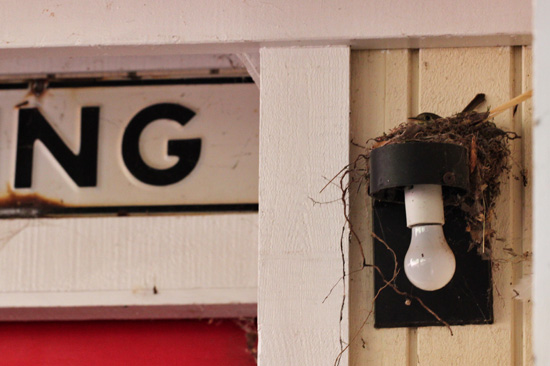
The Audubon website says:
Nest site is sometimes in the fork of a small tree, but usually in other situations: in a cleft of a vertical streambank, on a stump, among the upturned roots of a fallen tree, under a small bridge, or on rafters in a shed.
What she has here certainly qualifies as an “other situation,” but it’s working for her so far, and we’re doing our best to stay out of her way. I put some tape over the light switch so no one accidentally turns it on and heats things up. If all goes well, it will take about two weeks for the eggs to hatch and then another two for the youngsters to fledge. The female does all the nest building and incubation work, but then both parents feed the young. That means the male must be around here somewhere, but we haven’t noticed him yet. They’re such small birds; they come and go in complete silence.
When the female was briefly off the nest, we caught this closeup of her remarkable construction work and these three perfect, patient eggs.
